Street Fighter 5 introduces the V-Gauge
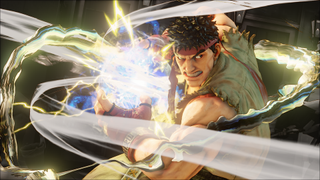
I keep accidentally punching my opponent in the face. That's not such a bad thing, given that this is Street Fighter V, where every hit counts toward that gratifying KO. But my muscle memory keeps clinging to mechanics from Ultra Street Fighter IV, seemingly unaware of what my brain's desperately trying to tell my fingers: SFV is its own beast. If I'm going to win consistently, I need to ditch those old habits and embrace a new set of deceptively complex mechanics.
That's not to say that this Street Fighter goes off the rails. Matches still revolve around one-on-one brawls between absurdly muscular characters; in this particular case, it's my stitched-together soldier Nash (who English speakers probably know by his first name, Charlie) versus the series’ stalwart frontman Ryu. While the sweeping ink aesthetic from USFIV is mostly gone, the entirely redone character models look extra crispy in Unreal Engine 4. M. Bison's Psycho-powered attacks radiate plumes of purple energy with each hit, while the spikes on Chun-Li's bracelets shine with a reflective gloss.
But once you dive into the nitty-gritty systems that decide the flow of battle, it's apparent that SFV is more than a graphical overhaul. The damage-absorbing Focus Attacks and comeback-enabling Ultra moves that define SFIV are gone. Now, skilled play hinges on your understanding of the V-Gauge, a segmented red bar that rests atop the familiar blue super meter. You accumulate it over the course of a round—primarily through character-specific V-Skills—in the hopes to attaining your V-Trigger, a souped-up move or mode that gives you a distinct edge. If you're getting rushed down, you can also spend a chunk of your V-Gauge to activate a V-Reversal while blocking, which instantly creates some space between you and the opponent with a quick counterattack.

It's Nash's V-Skill that keeps tripping me up. Each character's V-Skill offers a unique form of utility, and you can unleash it any time with a quick tap of medium punch and medium kick (which was previously the Focus Attack input). Learning how they function is just as important as any special move; for instance, Ryu's V-Skill gives him the exclusive ability to parry attacks, while Chun-Li's is a short leap that's great for mix-ups. Nash gets Bullet Clear, a quick swipe that can absorb an incoming projectile to build up his V-Gauge when timed correctly. It also doubles as a haymaker punch if the opponent is close enough—which, in my case, results in a lot of inadvertent aggression as I absentmindedly keep trying to use the Focus Attack that's no longer in the game.
Aggression is a driving force in SFV's overall design. Former-pro-turned-Capcom-guru Peter "ComboFiend" Rosas explains that each round's rapid clip and constant action mean that the retooled mechanics are working just as intended. "We want the pace of the game to be very exciting, to have people be constantly engaged. You know how in the old Street Fighters, you would win really fast or lose really fast? It's kinda the same feel here," says Rosas. "Fewer attacks are safe. You can't Focus Attack Dash Cancel out of stuff; you don't have backdash invincibility. All those things that helped Street Fighter IV be very [defense-oriented] are gone."

The design of the V-Gauge inherently encourages you to seize the initiative, because it empties out between each round. If you don't use it, you lose it, so you'll need to keep a vigilant eye for the moment when you can activate your V-Trigger. "I think when players who transition from SFIV first play [SFV], they might try to think 'Oh, it's a comeback mechanic' and wait to use it," says Rosas. "Don't wait. Just use it and play your character to their max potential at all times."
Without being afforded the dozens of hours it'll take to scratch the surface of SFV's balancing, it seems like my boy Nash might've gotten the short end of the V-Trigger stick. Ryu's Denjin Renki V-Trigger lets him charge up his fireballs with crackling lightning, giving them guard-breaking properties in the process. M. Bison can activate Psycho Power to turn his dash into a phasing teleport and give his special moves additional hits. Nash, meanwhile, expends his V-Gauge by doing a zippy Sonic Move teleport in any of three directions. It's balanced by the fact that it takes less time to go online, since Nash has a shorter meter, but it feels fleeting compared to the competition's splashy, long-lasting V-Trigger modes. That said, I did manage to set up an instantaneous air-to-air grab by dashing skyward, a satisfying moment I won't soon forget.
PC Gamer Newsletter
Sign up to get the best content of the week, and great gaming deals, as picked by the editors.
SFV feels just as invigorating and vibrant as you'd expect from the series, but it remains to be seen how the existing playerbase will adapt to the V-Gauge. For me, the constant rush to access your V-Trigger is undoubtedly exciting, though it doesn't yet feel as groundbreaking as Alpha's ISMs, Street Fighter III's parries, or SFIV's Focus Attacks. But Rosas reminds me that the groundwork is still what matters most. "[SFV] maintains the Street Fighter core: footsies, spacing, correctly outguessing your opponent," he says. No matter the mechanics that complement them, "the fundamentals of Street Fighter still remain."

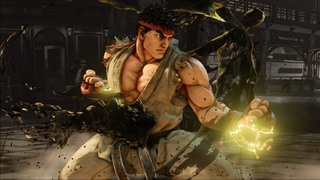
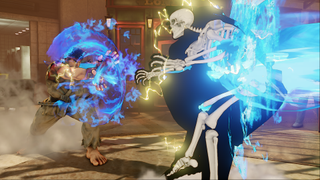
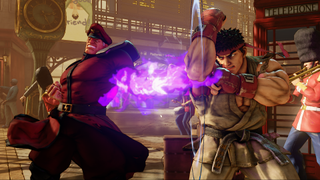
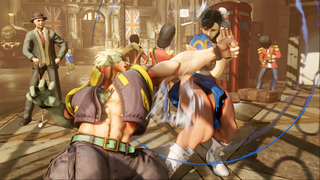

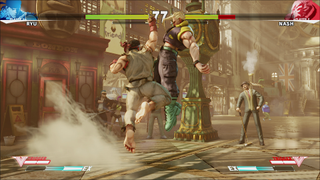
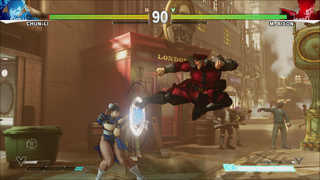
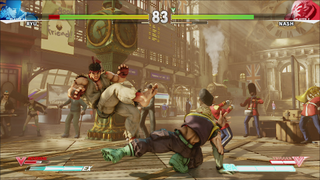
Most Popular


